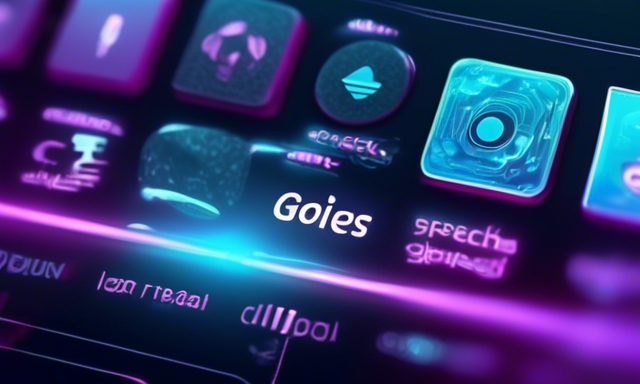Unlocking the Power of Speech-to-Text Technology 🎙️
Speech-to-text technology, also referred to as speech recognition or voice recognition, is a sophisticated tool that transforms spoken words into written text. Acting as digital ears and virtual hands, this technology converts voices into written words on a screen, revolutionizing various industries and enhancing daily convenience.
Understanding the Mechanism of Speech-to-Text Technology
Speech-to-text technology operates through a combination of linguistics, computer science, and artificial intelligence. The process involves:
- Audio Input: Receiving audio signals from a microphone or audio file.
- Signal Processing: Preprocessing audio for transcoding and normalization.
- Deep Learning Model: Utilizing speech recognition models trained on vast collections of audio-transcription pairs.
- Text Formatting: Enhancing raw transcriptions for readability by adding punctuation and capitalizing proper nouns.
Diverse Engines in Speech-to-Text Technology
Various speech-to-text engines offer distinct advantages and are suitable for specific purposes:
Cloud-based vs. On-premise Engines
- Cloud-based: Process audio on remote servers, offering scalability and minimal infrastructure maintenance, ideal for handling large data volumes.
- On-premise: Operate locally with no internet dependency but involve significant initial and ongoing costs.
Open-source vs. Proprietary Systems
- Open-source: Allows users to modify, view, and distribute source code, offering flexibility but requiring technical expertise.
- Proprietary: Developed by specific companies for tailored use cases and continuous updates.
Delving into the Operational Aspects of Speech-to-Text Technology
Comprehending the technical aspects of speech-to-text technology helps in understanding its intricate workings. Key steps include:
1. Audio Preprocessing
Converting audio inputs into suitable formats for speech recognition models involves transcoding, normalization, and segmentation.
2. Advanced Speech Recognition Models
Mapping audio signals to word sequences using models like Transformer and Conformer, trained on extensive audio-text datasets.
3. Text Formatting
Converting raw word sequences into readable text formats involves processes like inverse text normalization and capitalization.
Factors Influencing Accuracy
Several factors impact the accuracy of speech-to-text systems, including audio quality, accents, background noise, speaking style, vocabulary, language, context, and speaker variability.
Advantages Offered by Speech-to-Text Technology
Speech-to-text technology provides numerous benefits for users:
- Enhanced Productivity: Reduces time spent on manual transcription and note-taking.
- Improved Accessibility: Supports individuals with hearing impairments and disabilities.
- Enhanced Customer Experiences: Improves customer service operations.
- Cost Savings: Automated transcription is cost-effective compared to human services.
- Efficient Data Analysis: Enables streamlined analysis of large data sets.
- Enhanced Compliance: Provides accurate documentation of conversations and meetings.
- Flexibility: Compatible with various devices and software integrations.
Practical Applications of Speech-to-Text Technology
Speech-to-text technology finds utility in multiple applications:
Personal Usage
- Dictation and Note-taking: Enables quick capture of ideas for students and professionals.
- Accessibility: Offers real-time captioning for events and video content.
- Voice Commands: Powers virtual assistants like Siri and Alexa.
Business Implementations
- Customer Service: Transcribes customer calls for simplified analysis.
- Meeting Transcription: Creates searchable meeting and conference archives.
- Content Creation: Generates accurate transcripts and subtitles for podcasts and videos.
- Legal and Medical Transcription: Utilized by law firms and healthcare providers.
Exploring the Future of Speech-to-Text Technology
The future of speech-to-text technology holds promising advancements in accuracy, emotion detection, and language comprehension. However, challenges such as privacy concerns and potential biases in AI models need addressing.
Hot Take: Embracing the Evolution of Speech-to-Text Technology 🚀
As technology continuously evolves, speech-to-text technology stands at the forefront of innovation, offering unparalleled convenience and efficiency in various sectors. Embrace this transformative tool to enhance productivity, accessibility, and customer satisfaction in your personal and professional endeavors. Dive into the world of speech recognition and unlock a realm of possibilities today!





 By
By
 By
By
 By
By
 By
By

 By
By